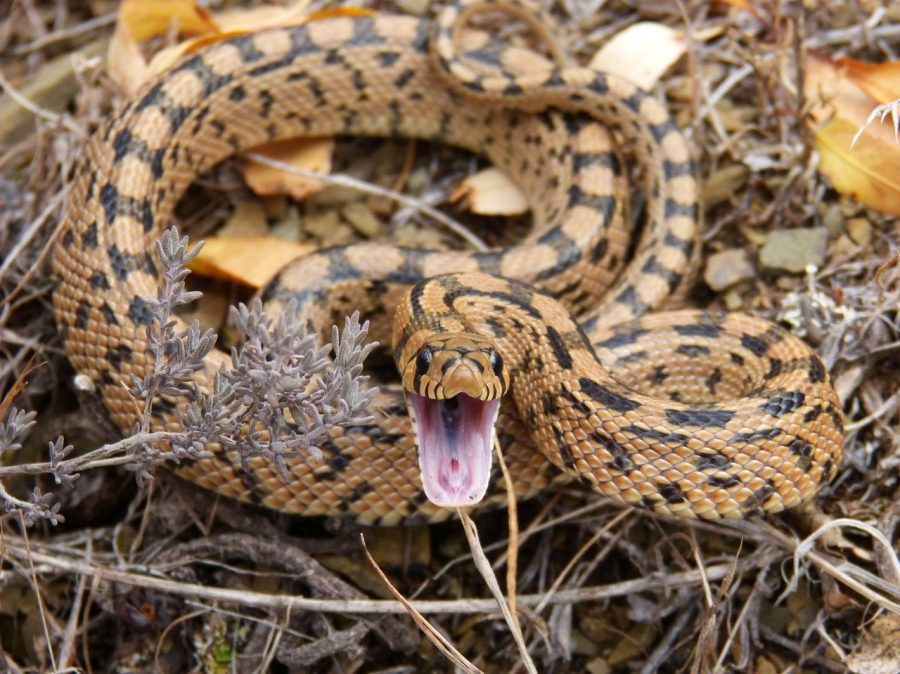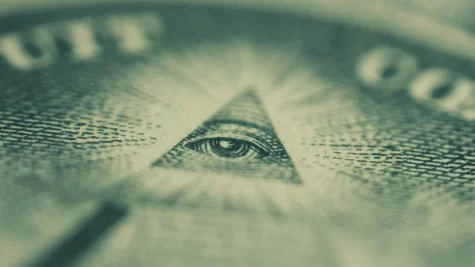Bullsnake Morphs–Totally Awesome or Total Bull?
January 28, 2021
If you’re afraid of snakes, you’re probably going to want to leave now (why you would be looking at an article about snakes, I have no idea). Exits should be conveniently located throughout your browser.
Bullsnakes, also known as Pituophis catenifer sayi. A subspecies of the gopher snake, bullsnakes are in the family Colubridae of snakes. Bullsnakes are heavy-bodied, small-headed snakes. These snakes are mostly captive-bred, although there also wild-caught individuals commonly offered for sale. Ranging in at six to eight feet as an adult, they are one of North America’s biggest snakes. They live in the Great Plains states, southern to northern Mexico, and even parts of Canada. Generally, they live between fifteen and twenty years in captivity. Their terrariums need to be either grassland or woodland, and they need to have a fifty-five gallon tank, but they can be kept in pair or even trios. Bullsnakes are also known to produce a loud and imposing hiss. They also feed on rodents.
Bullsnakes also have a wide variety of morphs. Some of these are the axanthic, white-sided, albino, false ghost, ghost, Hypomelanistic, patternless, and snow. All of them are recessive, which is pretty interesting. We’re also only going over the single genes, because I don’t feel like trying to figure out the
Albino snakes don’t actually look albino. Rather, because albino causes the absence of the pigment melanin, it only takes away the black in a snake. However, snakes get their coloring from more than just melanin. As a result, albino snakes aren’t snow white like most mammals. For instance, this squirrel:
Since albino snakes don’t have black pigmentation, instead they have a more yellow tone. Their red scales will also still show colors.
Next are axanthic morph snakes. The genetic morph restricts the yellow pigmentation in the snake, resulting in a lot more brown pigmentation and blacks shining through on the snake. Axanthic snakes also look much more grayscale in tone, due to the lack of yellow pigmentation. They can be confused with Anerythristic snakes (also known as “Anery”), where the red pigment is restricted instead. This leads to a snake that looks like this (this is a cornsnake):
The difference is the red and yellow pigments. However, bullsnakes have two strains of axanthic snakes—Miami and Omaha, or Ballum, axanthics. If you breed the pair together, you’ll get a normal snake since the strains are incompatible, but the babies would have the ability to have axanthic babies.
The Hypomelanistic, or hypo, bullsnake has two known strains, the Trumbower and Stillwater hypos. The Stillwater hypos originated in Stillwater, Oklahoma, hence the name. Meanwhile, the Trumbower snake is from the name of Craig Trumbower, who hatched the first hypo bullsnake in that strain. The Trumbower bullsnakes tend to lack almost all black except for their eyes and tongue, while the Stillwater bullsnakes can have some black and brown. As a result, Stillwater bullsnakes have a bit of a debate whether or not they are truly hypomelanistic animals. The name comes from a rattlesnake roundup when a pregnant bullsnake may have been mistakenly picked up and then pulled into captivity. The hypomelanistic snakes have a lack of melanin, but not a complete absence of it like an albino snake. As a result, their eyes and tongues are black. Additionally, they have brown to their patterns.
Then we have white-sided bullsnakes. It’s pretty easy to figure out what that means. The snakes have white sides, which makes them look a bit like if you took an Oreo milkshake and put it on a snake. Some snakes are different from others, obviously. Additionally, the white-sided gene also has an axanthic part to it, meaning it’s a pattern and color mutation, and it also limits the yellow pigment.
There are also the patternless bullsnakes, yet another pattern mutation that basically explains itself. They basically have no patterns. Their eyes and tongues are still black, so it’s not albinism, and for the most part they look more brown than anything due to the wild-type bullsnake (that would be just the normal pigmentation of the snake) being a mix of browns and blacks and yellows. They’re very pretty snakes.
There are more morphs, but I’m basically just going to leave this here since those were all the single-gene morphs. All of the information for today’s article came from Snake Discovery’s YouTube video on the subject of morphs, as well as a really old snake book.







